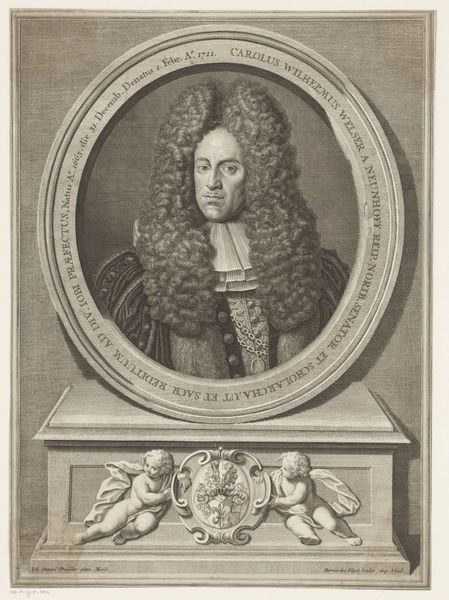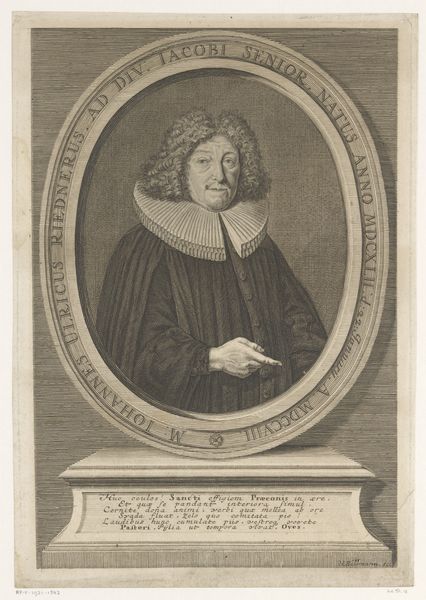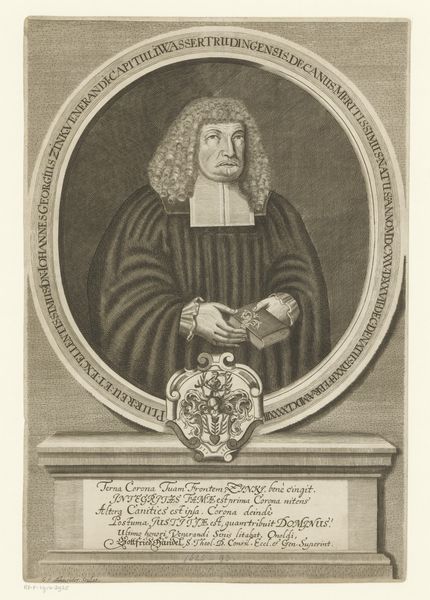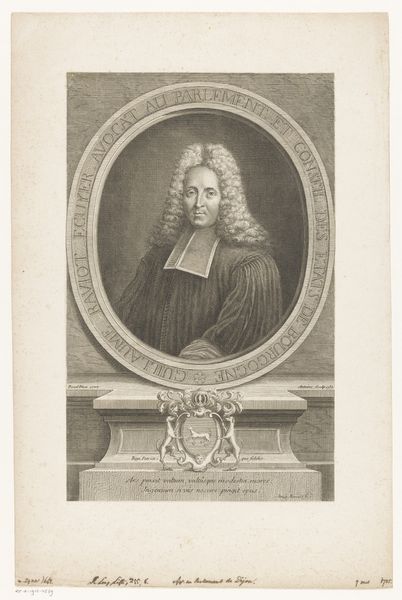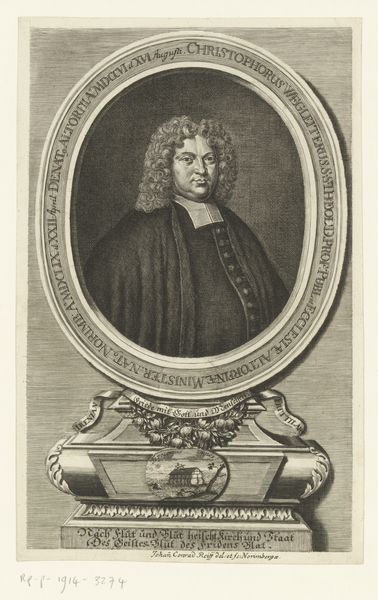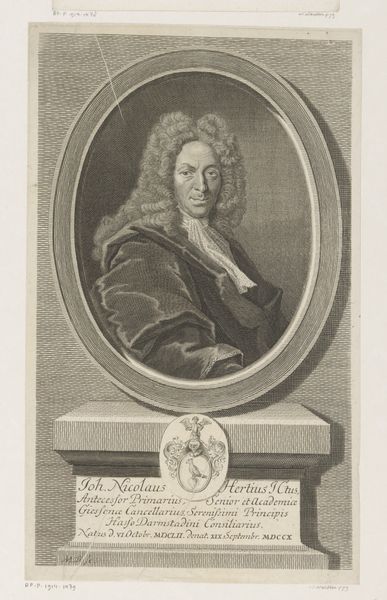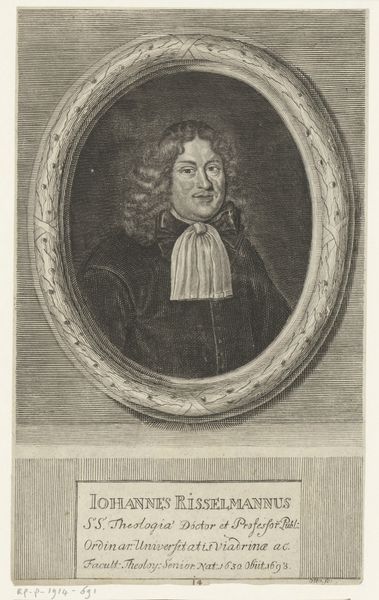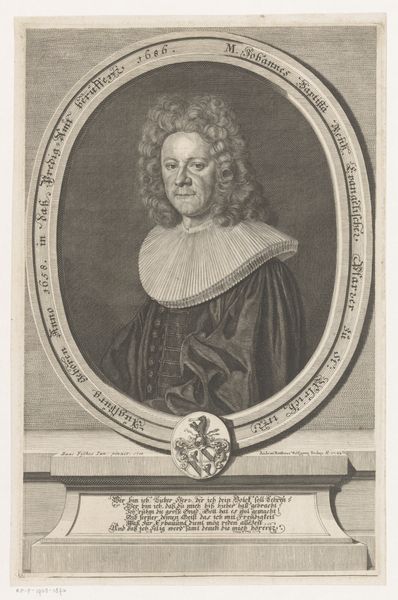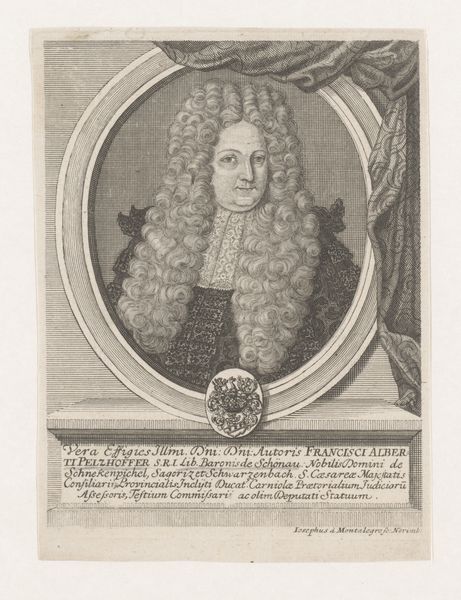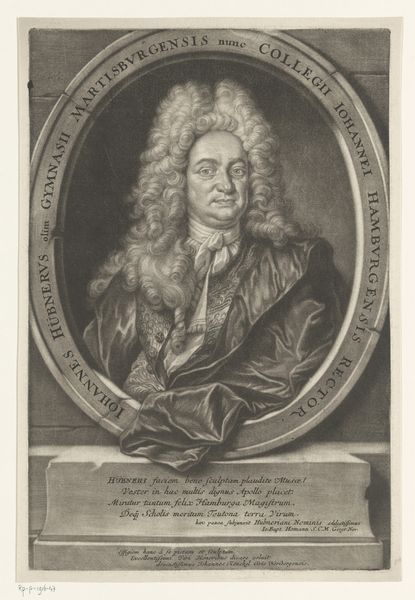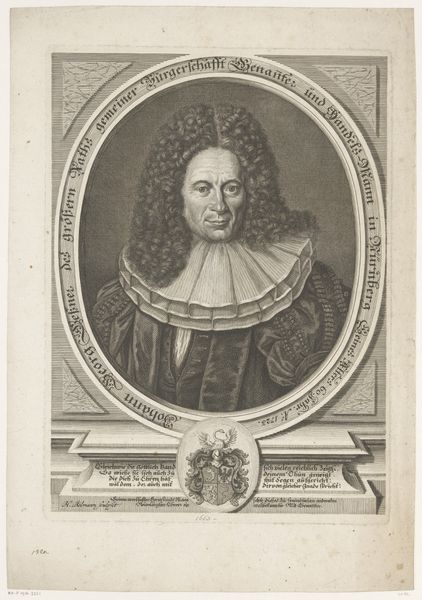
intaglio, engraving
#
portrait
#
baroque
#
intaglio
#
old engraving style
#
caricature
#
history-painting
#
engraving
Dimensions: height 365 mm, width 268 mm
Copyright: Rijks Museum: Open Domain
Curator: The visual texture is immediately striking! Before us we have an intaglio print, specifically an engraving, that captures Carl Gottlieb Harsdörffer. It's believed to have been made before 1737, featuring a portrait by Bernhard Vogel. Editor: I am struck by the sense of officialdom practically dripping from this piece. The dense lettering encircling the portrait lends it a very…stuffy aura. The man depicted exudes a certain pompous authority, too. Curator: It’s important to note Harsdörffer’s legacy in Nuremberg. In his lifetime, he became a well known jurist, poet and councilor, leaving his cultural and intellectual stamp on the region. The engraving enshrines his contribution to both church and republic with the carefully constructed Baroque framework. Editor: Exactly. See how he's framed by the swirling Baroque elements – ribbons, heraldic crests, an elaborate, almost theatrical frame that literally inscribes his accolades! What kind of symbolic weight does this level of decoration bear, and how does that weight influence how we are meant to remember him? Curator: The visual cues work almost like an ancient script, embedding encoded status updates. Each element builds a visual language, doesn’t it? Think of the wig – the exaggerated curls became emblems of class, power, learning, and influence in a rigidly structured social era. It signals something beyond individual fashion, but more to the codes of respectability and knowledge! Editor: Certainly! Beyond individual affectation, symbols of cultural capital become the subject of popular fascination as well. And, of course, this piece also helps to canonize Harsdörffer, fixing his persona for public consumption as a tool for building social status. Curator: Indeed. And how fascinating to see echoes of portraiture conventions surviving into printmaking. The way this portrait imitates painting in monochromatic form demonstrates that even "reproductive" mediums convey intentional messages of status. Editor: Reflecting upon it, I think that understanding the conventions this engraving plays with helps reveal something about how power and personality become carefully crafted artifacts in a public theater. It allows one to interpret society, status and enduring symbols within our collective narrative. Curator: And how portraits functioned—and continue to function—as objects performing particular socio-political functions. A reminder of how artworks also encode and sustain cultural memory across time.
Comments
No comments
Be the first to comment and join the conversation on the ultimate creative platform.

